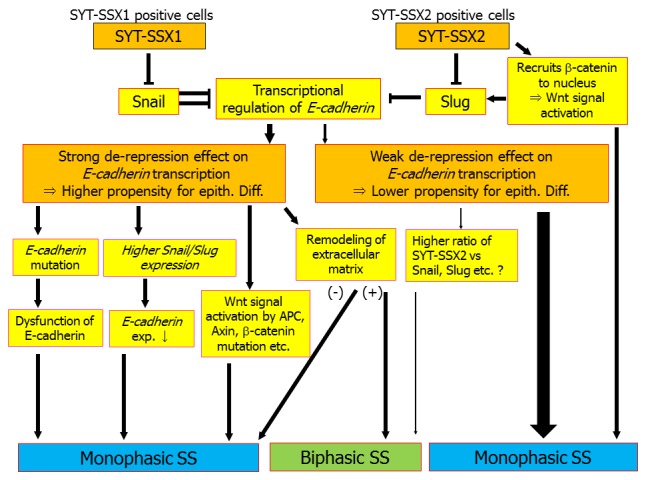Figure 1.

Proposed model for epithelial differentiation in synovial sarcoma. Tumor cells with the chromosomal translocation t(X;18)(p11.2;q11.2) possess an inherently higher propensity for epithelial differentiation than other mesenchymal tumors, especially spindle cell sarcomas. This is caused by dissociation of Snail or Slug from the E-cadherin promoter by SYT-SSX1 or SYT-SSX2, respectively, which relieves the repression of E-cadherin transcription. However, some SS with SYT-SSX1 lose E-cadherin expression because of mutation of E-cadherin, resulting in monophasic histology. The ratio of the expression levels of SYT-SSX1 and Snail is also associated with the expression of E-cadherin: the lower the SYT-SSX1/Snail ratio, the lower the expression of E-cadherin, thus affecting the tumor histology. In addition, Wnt signal activation caused by mutation of β-catenin, APC, or Axin1 and 2 is associated with monophasic histology. The remodeling of the extracellular matrix is also important. Only tumors that survive these steps can finally exhibit biphasic histology. On the other hand, the SYT-SSX2 fusion is a weaker de-repressor of the E-cadherin promoter than is SYT-SSX1, so it is difficult for SYT-SSX2-positive tumors to acquire enough capacity for epithelial differentiation to show glandular formation.
